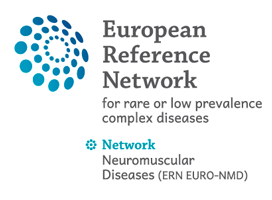15 Sep 2010
Peripheral Nerve Society Guideline on the classification, diagnosis, investigation, and immunosuppressive therapy of non-systemic vasculitic neuropathy: executive summary
Authors:
Michael P Collins, P James B Dyck, Gary S Gronseth, Loïc Guillevin, Robert D M Hadden, Dieter Heuss, Jean-Marc Léger, N C Notermans, John D Pollard, Gérard Said, Gen Sobue, A F J E Vrancken, John T Kissel; Peripheral Nerve Society
Non-systemic vasculitic neuropathy (NSVN) is routinely considered in the differential diagnosis of progressive axonal neuropathies, especially those with asymmetric or multifocal features. Diagnostic criteria for vasculitic neuropathy, classification criteria for NSVN, and therapeutic approaches to NSVN are not standardized. The aim of this guideline was to derive recommendations on the classification, diagnosis, investigation, and treatment of NSVN based on the available evidence and, where evidence was not available, expert consensus. Experts on vasculitis, vasculitic neuropathy, and methodology systematically reviewed the literature for articles addressing diagnostic issues concerning vasculitic neuropathy and NSVN as well as treatment of NSVN and the small-to-medium vessel primary systemic vasculitides using MEDLINE, EMBASE, and the Cochrane Library. The selected articles were analyzed and classified. The group initially reached consensus on a classification of vasculitides associated with neuropathy. Non-diabetic radiculoplexus neuropathy was incorporated within NSVN. The consensus definition of pathologically definite vasculitic neuropathy required that vessel wall inflammation be accompanied by vascular damage. Diagnostic criteria for pathologically probable vasculitic neuropathy included five predictors of definite vasculitic neuropathy: vascular deposits of IgM, C3, or fibrinogen by direct immunofluorescence; hemosiderin deposits; asymmetric nerve fiber loss; prominent active axonal degeneration; and myofiber necrosis, regeneration, or infarcts in peroneus brevis muscle biopsy (Good Practice Points from class II/III evidence). A case definition of clinically probable vasculitic neuropathy in patients lacking biopsy proof incorporated clinical features typical of vasculitic neuropathy: sensory or sensory-motor involvement, asymmetric/multifocal pattern, lower-limb predominance, distal-predominance, pain, acute relapsing course, and non-demyelinating electrodiagnostic features (Good Practice Points from class II/III evidence). Proposed exclusionary criteria for NSVN–favoring the alternate diagnosis of systemic vasculitic neuropathy–were clinicopathologic evidence of other-organ involvement; anti-neutrophil cytoplasmic antibody (ANCAs); cryoglobulins; sedimentation rate ≥100 mm/h; and medical condition/drug predisposing to systemic vasculitis (Good Practice Points supported by class III evidence). Three class III studies on treatment of NSVN were identified, which were insufficient to permit a level C recommendation. Therefore, the group reviewed the literature on treatment of primary small-to-medium vessel systemic vasculitides prior to deriving Good Practice Points on treatment of NSVN. Principal treatment recommendations were: (1) corticosteroid (CS) monotherapy for at least 6 months is considered first-line; (2) combination therapy should be used for rapidly progressive NSVN and patients who progress on CS monotherapy; (3) immunosuppressive options include cyclophosphamide, azathioprine, and methotrexate; (4) cyclophosphamide is indicated for severe neuropathies, generally administered in IV pulses to reduce cumulative dose and side effects; (5) in patients achieving clinical remission with combination therapy, maintenance therapy should be continued for 18-24 months with azathioprine or methotrexate; and (6) clinical trials to address all aspects of treatment are needed.
© 2010 Peripheral Nerve Society.

